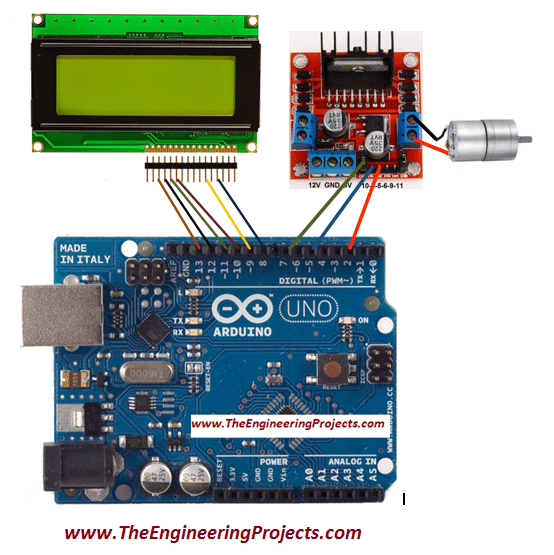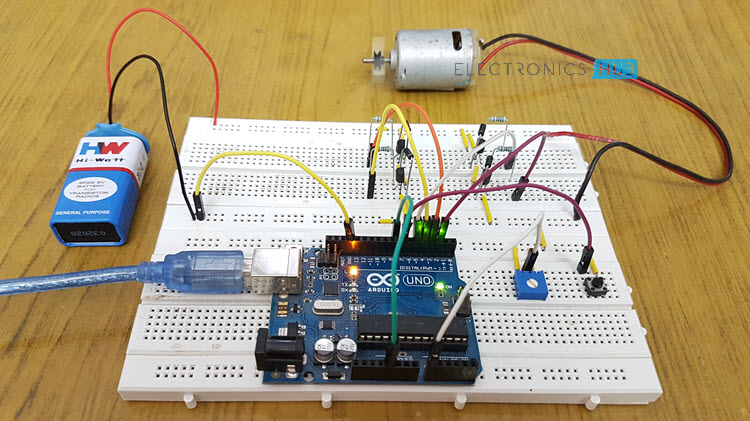


- #Forward and reverse motor control arduino how to#
- #Forward and reverse motor control arduino serial#
For BLDC motors, which rotate smoothly, without jerks, feedback is necessary. There are BLDC motors with sensors and without sensors. Note: there is also a BLDC motor type called coreless, which is used in “pocket drones.” These motors work on slightly different principles, but it is beyond the scope of this article to review the principles of their operation. This article will also be looking at connecting an OutRunner type motor to an Arduino board. OutRunner motors provide more torque, making them also the ideal choice for electric propulsion and drone applications. OutRunner motors are particularly useful for electric bicycle applications because the motor’s outer shell directly drives the bicycle wheel, eliminating the need for a clutch mechanism. In the OutRunner, the motor itself rotates around the axis with the coil, which remains stationary. That is, in the Inrunner (most DC motors are designed according to this principle), the axis inside the motor rotates, and the shell remains stationary. In Inrunner motors, the rotor magnets are inside the stator with windings, while in OutRunner motors, the magnets are outside and rotate around a stationary stator with windings. There are Inrunner and Outrunner BLDC motors. There are different types of BLDC motors – let’s look at the main ones. The speed at which the motor rotates depends on how quickly power is applied to the motor coil, and the direction of rotation depends on the order in which the phases that are alternately energized are swapped. The ESC controller then energizes the other two wires (phases), and this process of changing the wires that are energized continues continuously, causing the motor to rotate. During this process, the coil inside the motor is energized, causing the magnets to align with the energized coil. At any one time, only two phases are energized, i.e., the electric current enters the motor through one phase and leaves it through the other. The ESC (Electronic Speed Controller) is used to convert the DC voltage into a pulses sequence and distribute them over the three leads. Unlike other DC motors, BLDC motors are connected with three wires coming out of them, with each wire forming its own phase, which means you get a three-phase motor.Īlthough BLDC motors are DC motors, they are controlled by a pulse sequence.

#Forward and reverse motor control arduino how to#
I need your help.9 Useful Video: How to Run Brushless Motor Using Arduino How Brushless (BLDC) Motors WorkīLDC motors are now often used in ceiling fans and electric moving vehicles because of their smooth rotation. Continuous() function is not working either: after 50 step forward (moving and logging the step count), it continues moving forward logging just 1 for the counter.Backward() produces the expected logging output (counting the steps up to 50), but the motor only moves forward instead of backward.
#Forward and reverse motor control arduino serial#
Each function moves the motor step by step and logs the action on a serial output.īut I could not achieve my desired results: The stepper does not go backward but only goes forward. The functions Forward(), Backward() and Continuous() implement the actions to be performed for each button. I used Arduino's stepper library and wrote the following code. If button 3 is pressed, the stepper should go 50 steps forward after that 50 steps backward. If button 2 is pressed, the stepper should go 50 steps backward. If button 1 is pressed, the stepper should go for example 50 steps forward. I want to create an Arduino program for a system that has three buttons and one stepper motor.


 0 kommentar(er)
0 kommentar(er)
